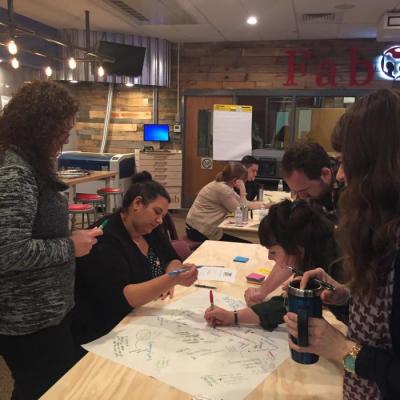This thinking routine helps learners slow down and look closely at a system. In doing so, young people are able to situate objects within systems and recognize the various people who participate—directly or indirectly—within a particular system.

This thinking routine helps learners slow down and look closely at a system. In doing so, young people are able to situate objects within systems and recognize the various people who participate—directly or indirectly—within a particular system.


Just as the broader Agency by Design framework for maker-centered learning encourages people to be active creators of the designed world, the Hacker Helper Tool invites educators to view the breadth of educator resources associated with the Agency by Design framework as malleable. This tool provides prompts to support educators as they “hack” existing Agency by Design tools, practices, and thinking routines to work better for their learners.
這個思考模式通過讓學生慢慢、細心地觀察物件和系統中的細節,鼓勵他們不止觀察物件的表面特徵,更重要的是了解其內部運作。這個思考模式可以激發學生的好奇心,鼓勵他們勇於提出問題,並且能做更深入的研究。

A protocol for looking critically at content and developing a sensitivity to the role(s) of power and participation in the design of objects and systems.

Guest Author Jeff Evancho, the Project Zero Programming Specialist at the Quaker Valley School District, describes the process of establishing the Pittsburgh Maker Educator Learning Community, including the community’s interest in developing documentation and assessment strategies for the maker-centered classroom.

An easy reference handout of the Agency by Design Framework for Maker-Centered Learning.
這個思考模式鼓勵學生從多方面思考,為一件物品/系統思考各種新的可能性。然後再鼓勵學生把新想法融合起來,決定一個有效率的方法去完善,重新設計,和拆解物件/系統。最終,這個思考模式是用於尋找新的設計機會以及實施新的想法的。
這個思考模式鼓勵學生能夠慢下来,仔细觀察其中一個系统。通過這樣幫助學生更好地認識具體系統裡無論是直接或間接相關的人物,學生也會注意到系统裡任何一點變化,也許都會有意無意地影響到系统的其它方面。

This practice is designed to deepen learners’ sensitivity to design through drawing, observing, questioning, and collaborating.